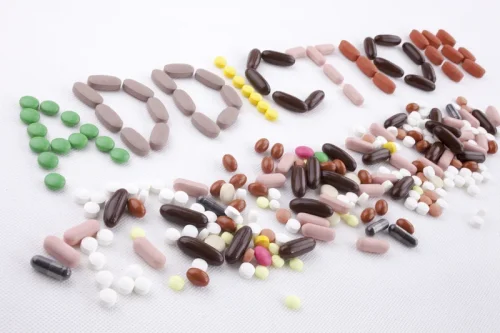
If family and friends work with a professional interventionist, they will ideally be provided with education on the course of addiction, as well as information about how they can avoid enabling their loved one. At the conclusion of the intervention, the hope is that loved ones will be able to change their own behaviors to better support the person with the addiction. This could involve stepping back and refusing to provide money or other forms of support if the person continues to refuse treatment. To conclude, this review highlighted the wide range of interventions implemented for AHR.
When Is It Time to Intervene?

Ultimately, the interventionist’s goals are to act as a mediator during the intervention and as a guide for next steps based on the outcome of the effort. This contribution is often key, because uncertainty about which program to choose or what to look for in a program are common barriers that keep people from seeking treatment. Many interventionists will personally bring the individual to treatment regardless of location. This might mean purchasing flights or planning travel in advance for the individual and the professional. It can be helpful, if possible, to have a bag already packed for the individual so the process can start immediately. It’s important to remember that this process does not always go smoothly, and there is potential for the individual to say no to treatment.

Harm Reduction Journal
Take our free, 5-minute alcohol abuse self-assessment below if you think you or someone you love might be struggling with alcohol abuse. The evaluation consists of 11 yes or no questions that are intended to be used as an informational tool to assess the severity and probability of an alcohol use disorder. The road to recovery can be full of twists and turns, but the love and support of friends and family Sobriety can go a long way toward helping someone straighten out. Coming prepared is crucial, whether that be with general information for how and where the person could get further help or actual plans to enter them into a rehab facility, outpatient program, or some form of therapy. Your intervention specialist will be able to help you figure out who should be there, who shouldn’t, and how many people should be involved in your intervention. One of the trickiest and most heartbreaking aspects of being close to an addict is realizing that no matter how hard you may want or try to help, they likely won’t change any behavior until and unless they themselves can admit they have a problem.
Consulting and Training
When interviewing perspective interventionists, the team should ask about the credentials of the interventionist. Professional interventionists have different certifications depending on the state they how to do an intervention for an alcoholic are in. Individuals who have Certified Intervention Professional (CIP) credentials have been specifically trained and certified to perform interventions. The team should also ask how much intervention experience the person has, and the type of intervention model they use. This will help the team decide whether or not the person’s approach is suitable for their needs. Staging an intervention for someone struggling with an alcohol use disorder can be the first, necessary step towards recovery.

Find Treatment
You will meet with him or her to make a plan for the meeting, including what you will say and how you will respond if your loved one refuses to seek treatment. You will also make a plan for where your loved one can be admitted for treatment at the end of the intervention. It’s hard helping a loved one who is struggling with any type of addiction. Sometimes a direct, heart-to-heart conversation can start the road to recovery. But when it comes to addiction, the person with the issue often struggles to see there’s an issue. You may need to join forces with others and take action through a formal intervention.
Signs of Alcohol Use Disorder
Nonetheless, we designed our search criteria to embrace the broadest possible definition of AHR, thus including a broad variety of interventions. The =https://ecosoberhouse.com/ exclusion of geographical areas not belonging to Europe, North America and Australia, and the exclusion of people under 18 also generates biases. We also have to note that we do not have a previously published protocol to describe this study, which constitutes a limitation in itself. One final limitation is the fact that some interventions are not described or analyzed in a comprehensive, detailed manner, which naturally has consequences for our attempt to catalogue approaches, strategies, facilitators and barriers. Establishing a relationship of trust with users makes it possible to set objectives tailored to individual needs 73, taking into account alcohol users’ own point of view on their intake 60.
Alcohol Intervention Do’s and Don’ts
Even if your loved one agrees to, and even completes, a therapy program this time around, they’ll still need to commit to a number of lifestyle changes to stay on top of their sobriety and may even relapse down the line. You can also give yourself the best chance possible at making an impact by planning the intervention for a time and day when your loved one is less likely to be drinking and more likely to be relaxed and open-minded. Open body language, positive affirmations, and controlled tempers during the intervention are also useful. Holding the intervention at home might allow the person certain “outs,” like the retreat to a bedroom or bathroom. Instead, think of places like your intervention specialists’ office, or possibly a private room at a church or community center. This might help keep the person on better behavior or make them think twice about walking out.
- If so, offer to drive them to doctor’s appointments, therapy sessions, support group meetings, or do other things that show that you care.
- This means they will continue to drink, even when they face serious consequences.

The use of financial and material incentives raises questions as to the long-term viability and efficacy of interventions after the researchers are gone. Six articles in our corpus describe interventions making use of financial or material incentives 12, 36, 45, 46, 49, 70, 80, and questions thus remain over their long-term viability and efficacy. This scoping review with evidence appraisal aims to provides a panorama of the interventions on AHR. We used the Preferred Reporting Items for Systematic Reviews and Meta-analyses extension for scoping reviews guidelines (PRISMA-ScR) 2020 statement to report the method section 21 see additional file n°1. This review aims to describe how AHR interventions are currently conducted, assess their efficacy and analyze the barriers and facilitators identified by studies regarding their effectiveness. Having a follow-up plan is just as important as planning the intervention itself, especially because the nature of recovery can be so daunting and call for a person to make so many major changes in their life.